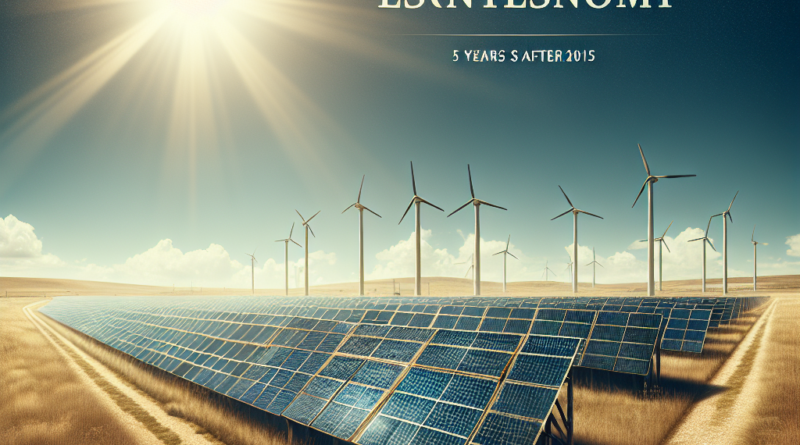What Happened to This Solar Plant Five Years After Installation?
Repopulating the Earth with Bees through Solar Energy
Five years post-installation of a solar farm in southern Minnesota, the site has seen remarkable transformations.
Initially set up for sustainable energy production, the solar panels have created an ideal environment for bees, evolving into a true sanctuary for these crucial insects vital to our ecosystem.
The synergy between agriculture and solar technology has fostered pesticide-free shaded areas, resulting in a steady increase in bee populations over the years.
This phenomenon was documented in a study by the Argonne National Laboratory, which investigated two large solar facilities.
The Threat to Bees and Biodiversity
The decline of bee populations and other pollinators poses a significant threat to biodiversity and agriculture.
With over 20,000 bee species globally responsible for around 80% of crop production, safeguarding them is essential for food security and the survival of our planet.
The research highlighted how the installation of solar panels could reverse the decline in bee populations, enhancing species diversity and creating new habitats.
This intersection of energy generation and ecological health presents exciting opportunities.
The Importance of Bees: A Sustainable Solution
Bees are fundamental to ecological balance and food production.
These pollinators not only support numerous plant species but are vital for agriculture.
Approximately 90% of flowering plant species depend on animal pollination.
However, intensive pesticide use and habitat loss from industrial farming have precipitated a sharp decline in bee populations, jeopardizing global biodiversity and food security.
The agrophotovoltaic project in Minnesota offers an innovative solution by marrying solar energy production with agriculture.
By creating bee-friendly habitats and minimizing pesticide use, farmers can benefit from shaded crops that are more resilient to climate extremes, while simultaneously promoting bee health and agricultural productivity through improved pollination.
Benefits of Solar Installations
The installation of solar farms brings numerous benefits beyond energy production, positively impacting the surrounding ecosystem.
The creation of shaded areas reduces water evaporation and protects crops from climate-related stresses, enhancing yield while providing sustainable land-use options.
The study further revealed that fields adjacent to solar installations saw a threefold increase in bee populations.
This uptick supports greater diversity in native plant species and abundance of flowers, which are vital for a healthy ecosystem.
Farmers can thus enjoy enhanced pollination services and natural pest control, decreasing their reliance on chemical pesticides.
According to Lee Walston, the lead ecologist on the solar study, strategically located solar energy projects can be a viable means of protecting insect populations and enhancing ecosystem services in adjacent agriculture.
These findings indicate that solar initiatives can play a pivotal role in biodiversity conservation while addressing land-use and energy production challenges.
Moving Towards a Sustainable Future
Implementing agrophotovoltaic projects could mark a paradigm shift in agriculture.
With increasing awareness of the significance of pollinators, it is crucial to continue investing in research and initiatives that merge environmental sustainability with energy production.




